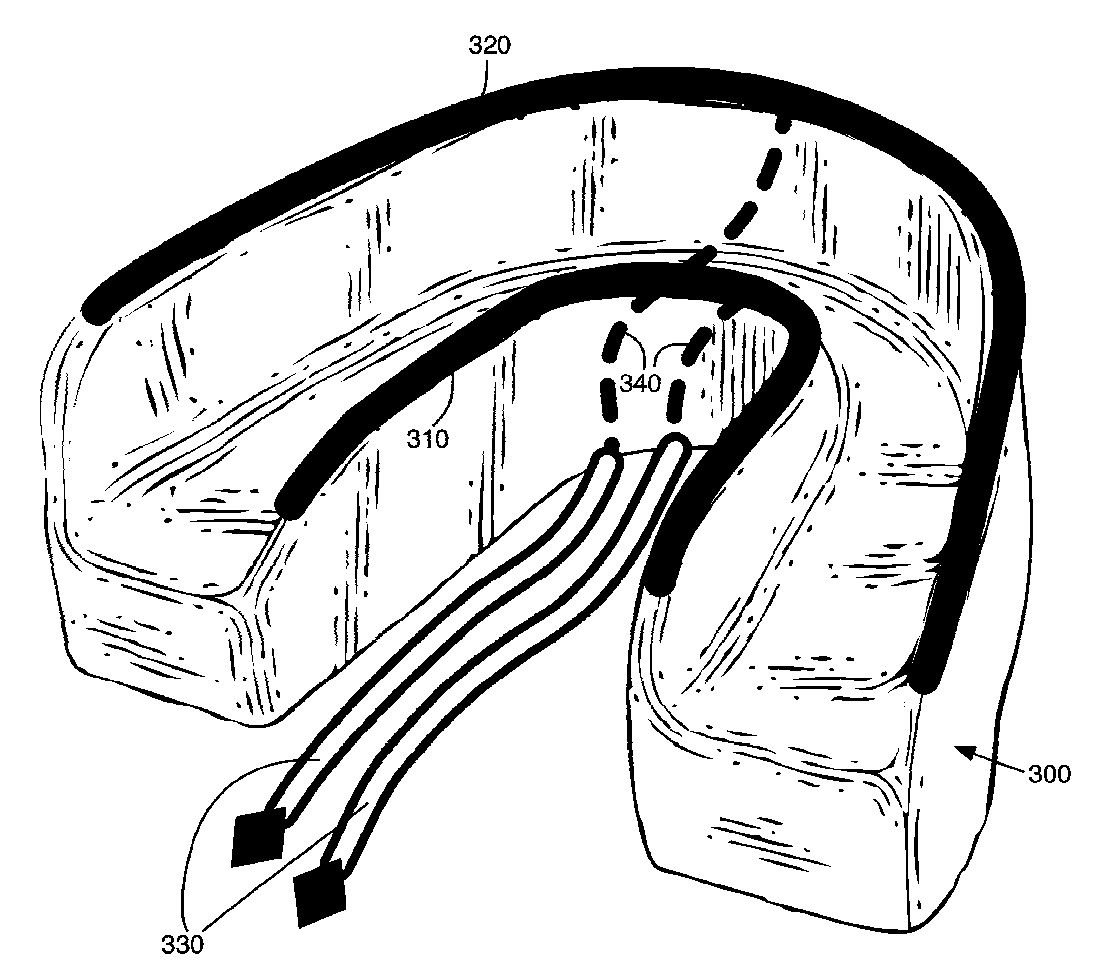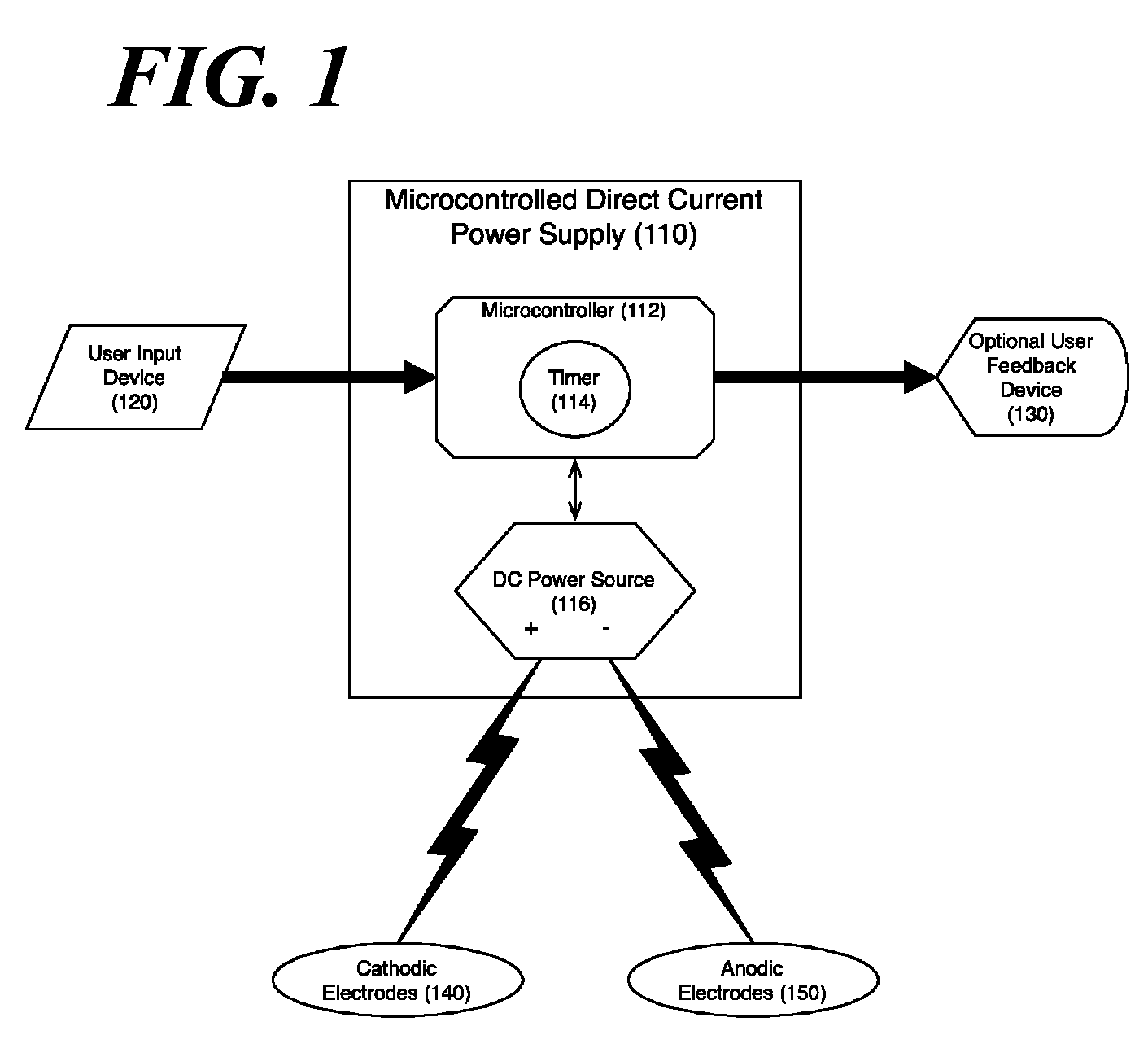Concurrent treatment of oral maladies using direct current electricity
a technology of direct current electricity and oral cavity, applied in the field of concurrent treatment of oral cavity using direct current electricity, can solve the problems of tooth loss, gingival recession, bone resorption, tooth loss, etc., and achieve the effect of restoring any lost gingival tissue, preventing the formation of periodontal pockets, and preventing the formation of new gingival tissu
- Summary
- Abstract
- Description
- Claims
- Application Information
AI Technical Summary
Benefits of technology
Problems solved by technology
Method used
Image
Examples
first embodiment
[0035]FIG. 1 demonstrates the overall structure of our invention, including a microcontrolled power source, user input, user feedback and oral electrodes.
[0036]FIG. 2 shows a top-down view of another embodiment that includes a mouthpiece with two continuous electrodes and associated conductors.
[0037]FIG. 3 shows a perspective view of the same embodiment of FIG. 2, with two electrodes embedded in a mouthpiece.
[0038]FIG. 4 offers a top-down view of another embodiment similar to FIG. 2 that includes a mouthpiece, but with a plurality of discrete electrodes.
[0039]FIG. 5 provides a perspective view of an additional embodiment similar to FIG. 4 with a plurality of electrodes that are electrically connected by embedded conductors.
[0040]FIG. 6 shows an additional embodiment of with an analog power supply using a dual unit, three-port switch.
DRAWINGS
Reference Numerals
[0041]
110microcontrolled direct current112microcontrollerpower supply114timer116direct current power source120user input devic...
PUM
 Login to View More
Login to View More Abstract
Description
Claims
Application Information
 Login to View More
Login to View More - R&D
- Intellectual Property
- Life Sciences
- Materials
- Tech Scout
- Unparalleled Data Quality
- Higher Quality Content
- 60% Fewer Hallucinations
Browse by: Latest US Patents, China's latest patents, Technical Efficacy Thesaurus, Application Domain, Technology Topic, Popular Technical Reports.
© 2025 PatSnap. All rights reserved.Legal|Privacy policy|Modern Slavery Act Transparency Statement|Sitemap|About US| Contact US: help@patsnap.com



